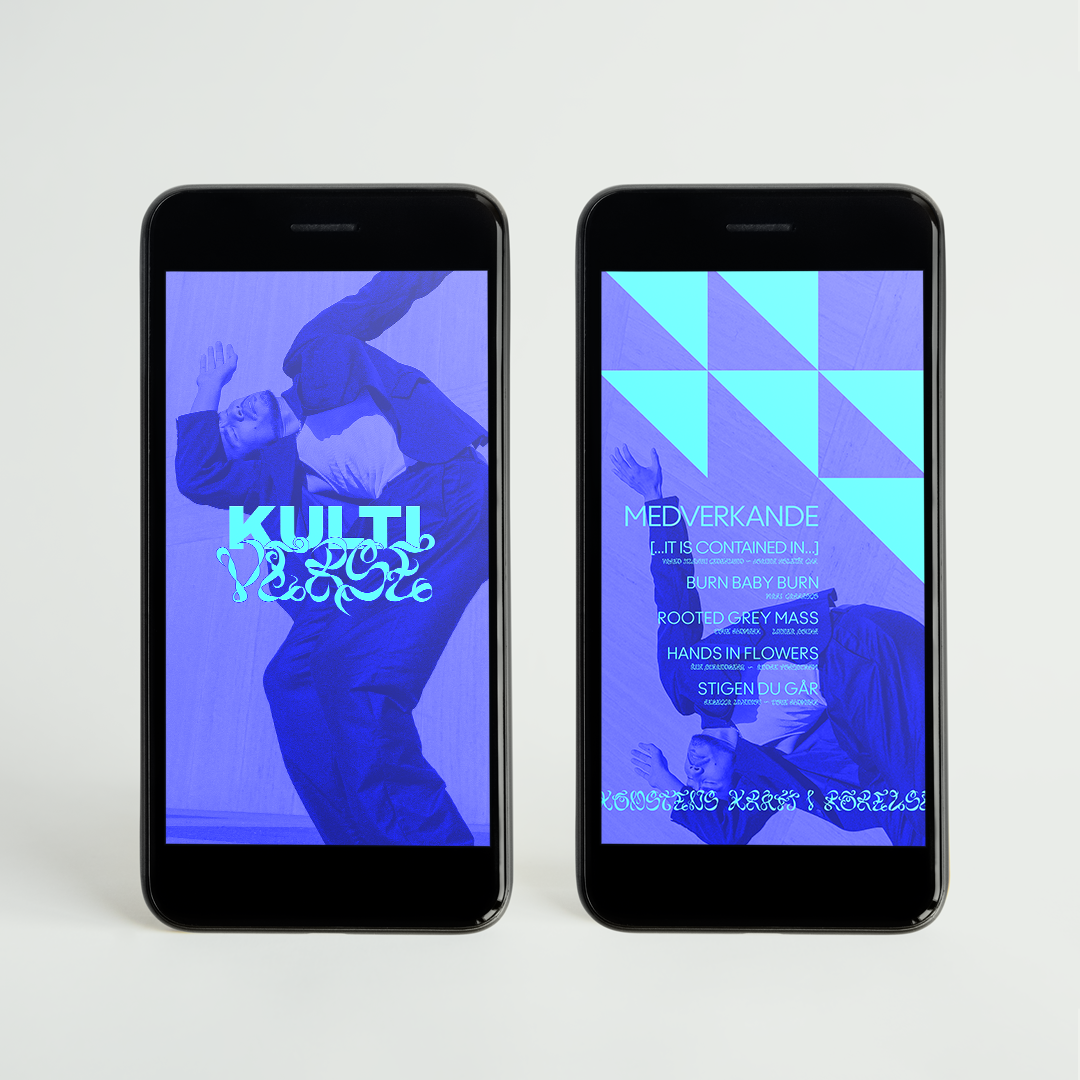KULTIVERSE
Case
Create the visual, graphic identity and positioning for the mobile cultural center Kultiverse. The work involved strategic planning, concept development and graphic design which included aspects such as typeface and pattern design.
Manifesto of Kultiverse
In a dynamic society where voices for diversity and inclusion are louder than ever, we are a force for creating new, innovative spaces for art and performing arts. We are not just curators; we are architects of positive change, contributing to and promoting a conscious and inclusive cultural landscape. We aim to build a world where diversity is not only celebrated but embedded in cultural experiences.
In a dynamic society where voices for diversity and inclusion are louder than ever, we are a force for creating new, innovative spaces for art and performing arts. We are not just curators; we are architects of positive change, contributing to and promoting a conscious and inclusive cultural landscape. We aim to build a world where diversity is not only celebrated but embedded in cultural experiences.
Kultiverse is not confined to a physical space; we are cultural nomads who pop-up and appear in unexpected places, creating new stages where art typically do not exist. Beyond traditional, city-centered institutions. We enable change, create a democratic platform, and break structural norms for the freedom of creativity. From aspiring to established artists, from mobile galleries to public squares, we are a movement transforming and uniting society through the power of art, one experience at a time.
Art and performing arts are synonymous with creativity and imagination, inspiring people to think outside the box, explore new ideas, and experience the world in different ways. We know that positive cultural interactions act as a catalyst for change. Kultiverse ensures that more perspectives, beyond those commonly highlighted, are heard, leading to greater democratic participation and, consequently, a more socially sustainable society.
Design
Create a graphic identity for the pop-up cultural center Kultiverse. The design should reflect the organization's core values, be accessible to all, and build a strong connection to the general public while maintaining its creative character. The graphic identity needs to be adaptable and flexible for different types of events and should be applicable to everything from exhibitions and festivals to performing arts productions and concerts. The design should clearly communicate purpose and vision without complicating matters. It is important that it is inclusive and reaches the wider public, and that it is accessible to all, regardless of background and language. Consider how the design can overcome any language barriers and be inclusive in innovative ways.
The typeface, Kultiverse, is inspired by dance and movement. My goal was to design a typeface that felt flexible in its form, as well as playful and full of movement and motion. Kultiverse, as a mobile culture center, represents a movement dedicated to transforming the cultural landscape—a spirit I wanted to capture in the shapes of the letters. I also aimed for it to feel like a new language, making it equally inclusive for everyone. I began by sketching the typeface by hand, using monolines and then contours, and then moved on to digitalize it.
I also wanted the visual identity of Kultiverse to feature a playful pattern—a pattern built on a variety of different shapes, where each unique shape represents an individual, a voice, and a personal expression. This serves as a symbol of Kultiverse's commitment to diversity and inclusion. The shapes, in turn, influence one another, creating new forms, patterns, and structures that collectively build a strong, new, solid foundation. No shape dominates another; instead, each unique shape (individual) has the opportunity to influence the whole. This represents the work for change, democracy, and equality—the strength that arises when diverse individuals and ideas come together.








